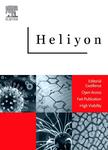版权所有:内蒙古大学图书馆 技术提供:维普资讯• 智图
内蒙古自治区呼和浩特市赛罕区大学西街235号 邮编: 010021

作者机构:Department of Remote Sensing and GIS Faculty of Geography University of Tehran Zarrinkoob Alley Vesal-Shirazi Street Tehran Iran Center for Research in Geospatial Data and Intelligence Department of Geomatics Sciences Université Laval Avenue Du Séminaire Québec 1055 QC Canada Research Institute for Development of Space Science Technology and Applications University of Tehran Tehran Iran Centre interdisciplinaire de recherche en réadaptation et intégration sociale (Cirris) Université Laval 525 boul. Wilfrid-Hamel Québec QC Canada
出 版 物:《Heliyon》 (Heliyon)
年 卷 期:2025年第11卷第1期
页 面:e41101页
基 金:Université Laval, UL Natural Sciences and Engineering Research Council of Canada, NSERC Iran National Science Foundation, INSF, (99019824) Iran National Science Foundation, INSF
主 题:Accessibility assessment Adaptive weighting algorithm Pedestrian routes Segment length Wheelchair users
摘 要:To reach a destination within the community, it is crucial that wheelchair users possess the ability to plan, execute, and acquire knowledge of routes in a safe and efficient manner. While numerous methods have been introduced for assessing the accessibility of sidewalks, existing studies often overlook the variations in the perception of the accessibility of long segments based on each wheelchair user s capabilities. Extended distances may lead to increased fatigue, impacting the ability of individuals with mobility disabilities to navigate sidewalks comfortably and independently. In this paper, we propose an adaptive weighting method, effectively addressing the accessibility assessment of sidewalks by considering more specifically the impact of sidewalk length. The results underscore the significant impact of sidewalk length on mobility, delineating varying accessibility indices in long sidewalk segments, and offering a more realistic evaluation of accessibility based on wheelchair users perceptions. For validation purposes, the proposed model was implemented in a personalized routing tool called MobiliSIG and compared with the conventional fuzzy model provided by the tool for accessibility assessment through a case study in Quebec City. The results demonstrated improved routing outcomes compared to previous methods, showcasing the effectiveness of our model in enhancing sidewalk accessibility assessment. © 2024